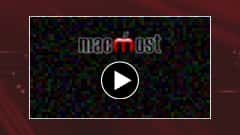 | 5 Ways To Trim Audio On a Mac | Video Tutorial
Sep 30, 2022
|
 | 10 Ways To Have Fun With GarageBand For iPad | Video Tutorial
Aug 26, 2022
|
 | GarageBand Audio Editing Basics | Video Tutorial
May 19, 2021
|
 | Turn Your iPhone Into a Musical Instrument With GarageBand | Video Tutorial
Nov 9, 2020
|
 | 10 Fun and Useful Things You Can Do With GarageBand For Mac | Video Tutorial
Aug 6, 2020
|
 | Play Music Using Samples In Mac GarageBand | Video Tutorial
Apr 14, 2020
|
 | How To Set Any Sound File As a Ringtone On Your iPhone | Video Tutorial
Mar 20, 2020
|
 | How To Record Audio On Your Mac | Video Tutorial
Jan 2, 2020
|
 | Create Unique Music For Your Videos In GarageBand | Video Tutorial
Nov 13, 2019
|
 | Recording With Multiple Microphones Using GarageBand | Video Tutorial
Jun 27, 2019
|
 | How To Make a Tape Stop Effect In GarageBand | Video Tutorial
May 29, 2019
|
 | Fade Audio In GarageBand For Mac | Video Tutorial
May 20, 2019
|
 | How To Change Instruments Used By Loops In GarageBand | Video Tutorial
Mar 18, 2019
|
 | Syncing Sounds to Video With GarageBand | Video Tutorial
Nov 28, 2018
|
 | Fun With the iOS GarageBand Beat Sequencer | Video Tutorial
Aug 21, 2018
|
 | Having Fun with MIDI Files In GarageBand | Video Tutorial
Nov 1, 2017
|
 | Slow Down a Portion of a Track In Garageband | Video Tutorial
Mar 23, 2016
|
 | GarageBand Live Loops | Video Tutorial
Feb 3, 2016
|
 | Music Memos | Video Tutorial
Jan 25, 2016
|
 | Fun With GarageBand Drummers | Video Tutorial
Feb 11, 2015
|
 | Editing An Audio File In GarageBand | Video Tutorial
May 12, 2014
|
 | Creating Ringtones With GarageBand | Video Tutorial
Mar 12, 2014
|
 | Creating a Simple Song With Loops In GarageBand | Video Tutorial
Feb 24, 2014
|
 | Recording Audio With GarageBand | Video Tutorial
Dec 6, 2013
|
 | MacMost Now 906: Creating Ringtones With GarageBand For iOS | Video Tutorial
Aug 19, 2013
|
 | MacMost Now 846: Using GarageBand For iPad Part 5: Building a Song | Video Tutorial
Apr 1, 2013
|
 | MacMost Now 843: Using GarageBand For iPad Part 4: Real Guitar and Voice | Video Tutorial
Mar 25, 2013
|
 | MacMost Now 840: Using GarageBand for iPad Part 3: Keyboards | Video Tutorial
Mar 18, 2013
|
 | MacMost Now 837: Using GarageBand for iPad Part 2: Bass and Guitar | Video Tutorial
Mar 11, 2013
|
 | MacMost Now 834: Using GarageBand for iPad Part 1: Drums | Video Tutorial
Mar 4, 2013
|
 | MacMost Now 654: Automation Curves In GarageBand | Video Tutorial
Jan 6, 2012
|
 | MacMost Now 639: Using GarageBand To Apply Audio Effects In Videos | Video Tutorial
Dec 2, 2011
|
 | MacMost Now 601: Changing the Tempo Of Tracks in GarageBand 11 | Video Tutorial
Sep 5, 2011
|
 | MacMost Now 558: Recording Voice in GarageBand | Video Tutorial
May 25, 2011
|
 | MacMost Now 554: Recording Internal Audio | Video Tutorial
May 16, 2011
|
 | MacMost Now 539: Multiple Mics With GarageBand | Video Tutorial
Apr 11, 2011
|
 | MacMost Now 528: GarageBand for iPad | Video Tutorial
Mar 14, 2011
|
 | MacMost Now 470: Groove Matching and Flex Time in GarageBand 11 | Video Tutorial
Oct 29, 2010
|
 | MacMost Now 351: Editing Audio Files in GarageBand | Video Tutorial
Jan 29, 2010
|
 | MacMost Now 313: Making a Simple Music Loop with GarageBand | Video Tutorial
Nov 2, 2009
|
 | MacMost Now 307: Editing a Video Soundtrack in GarageBand | Video Tutorial
Oct 19, 2009
|
 | MacMost Now 139: Converting Video to MP3 Audio | Video Tutorial
Sep 29, 2008
|
 | MacMost Now 88: Make Your Own iPhone Ringtones | Video Tutorial
Jun 2, 2008
|



























